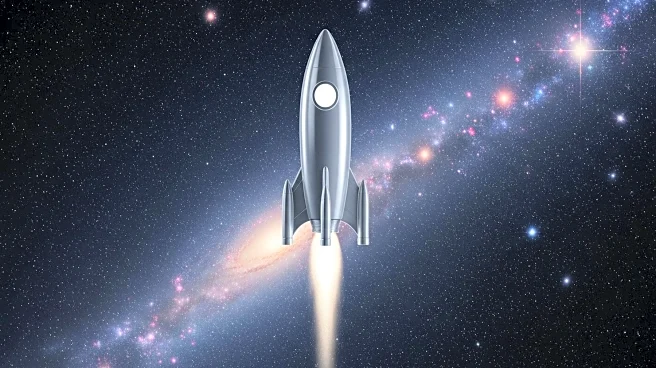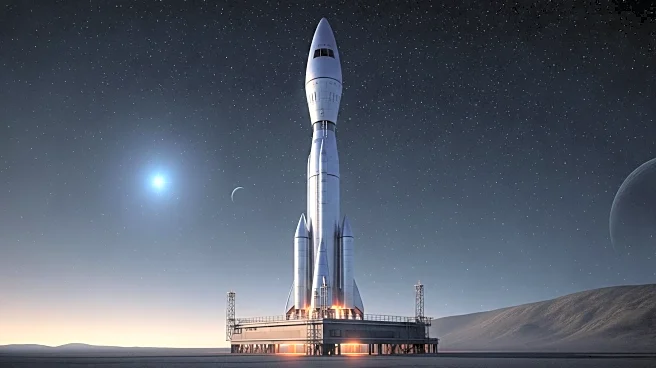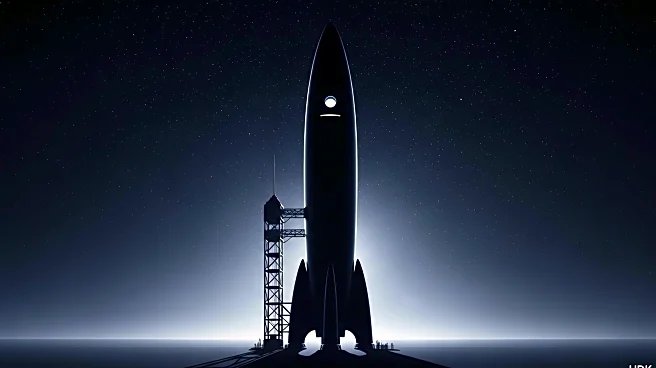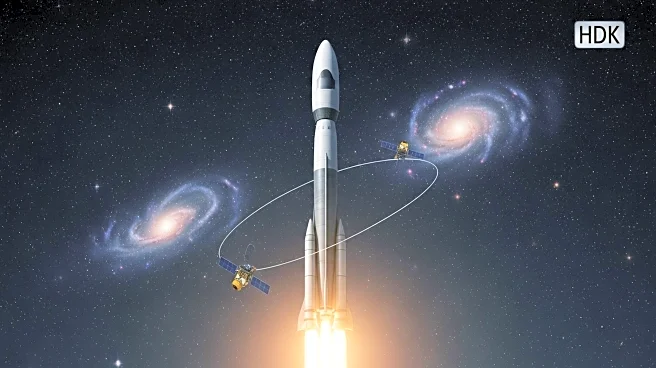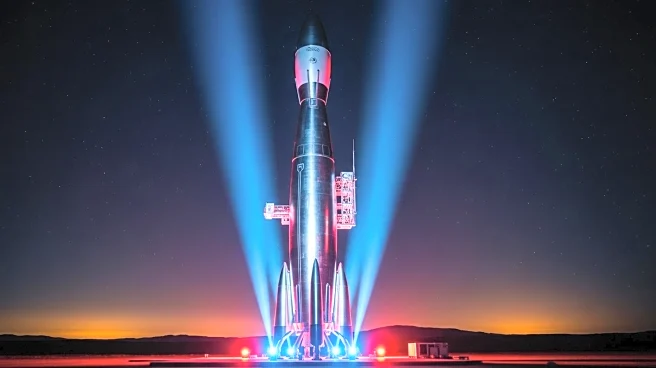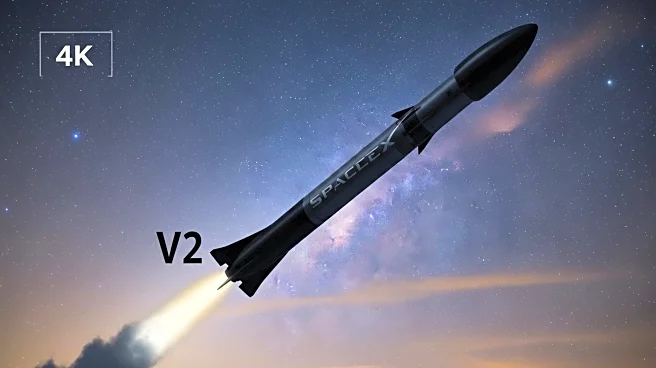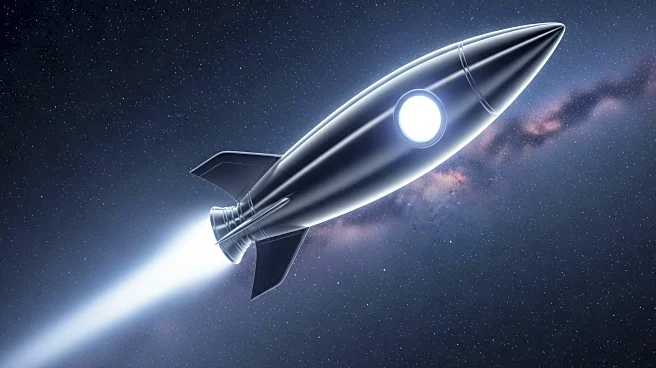What is the story about?
What's Happening?
SpaceX successfully completed the 11th test flight of its Starship rocket, marking the final flight of the Version 2 configuration. The test flight, which took place on October 13, 2025, achieved all major objectives, including stage separation and payload deployment. The Super Heavy booster performed a controlled splashdown in the ocean, while the Starship deployed Starlink simulators and tested its heat shield during reentry. SpaceX is now focusing on the development of the next-generation Starship, Version 3, which is expected to be used for orbital flights and operational payload missions.
Why It's Important?
The successful completion of the 11th test flight is a significant milestone for SpaceX as it transitions to the next-generation Starship. The new version is expected to enhance capabilities for orbital missions, rapid reuse, and in-orbit propellant transfer, which are crucial for NASA's Human Landing System for lunar missions. This development is vital for SpaceX's plans to support NASA's Artemis program and potentially land astronauts on the moon by 2027. The advancements in Starship technology could also pave the way for future missions to Mars, aligning with SpaceX's long-term goals.
What's Next?
SpaceX is preparing multiple Version 3 Starships for testing, with plans to demonstrate orbital refueling capabilities next year. The company is expanding its manufacturing and launch infrastructure to support mass production and increase launch frequency. The next-generation Starship is expected to carry larger payloads and support longer-duration missions, potentially enabling crewed lunar and Mars missions. SpaceX's focus on rapid reusability and propellant transfer will be critical for achieving these ambitious goals.
Beyond the Headlines
The transition to Version 3 Starship represents a shift towards more sustainable and cost-effective space exploration. The ability to reuse rockets and transfer propellant in orbit could significantly reduce the cost of space missions, making them more accessible. This development also highlights the growing collaboration between private companies like SpaceX and government agencies like NASA, which could accelerate advancements in space technology and exploration.
AI Generated Content
Do you find this article useful?
